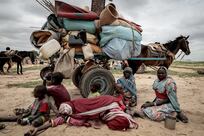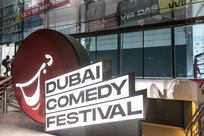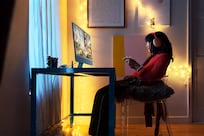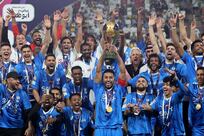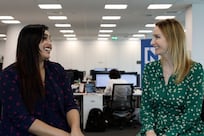Creativity, once the most common word in the design community, has given way to solution. And it's no accident. If design was once thought of as an industry for arty, creative types whose expertise lay almost exclusively in aesthetics, those days have come and gone. Designers will be the first to tell you, the fruits of their labour are ubiquitous. And because it is a science as much as it is an art, design is being touted by those with a penchant for forward-thinking as the great problem-solver of the future.
The ethos driving Traffic gallery's second international design competition matches that behind Massive Change, Bruce Mau's successful international travelling exhibit (and book of the same name), in which the Canadian designer wanted to show that the biggest question facing humanity is simple: "Now we can do anything, what will we do?" While he never claimed to have a single answer, he illustrated the possibilities by having a diverse cross-section of designers (experts in everything from affordable housing to transportation, agriculture, architecture to biomimicry and communications, to name a few) explain some of their ideas for going forward, minimising the effects of predicted challenges and maximising the potential for most people to raise their quality of life. His point was that design - in whatever form - will provide the solutions to some of the greatest challenges of our time.
Perhaps the best word to describe Mau's project is broad. Ambitious would work too, but inherent in his goal was to allow people from disparate backgrounds to exchange experiences and ideas. The world has become so small, his thinking went, let's all learn from each other. And that is a philosophy that Traffic shares. Design can apply to anything, explains the Dubai gallery's events organiser, Simone Sebastian. "It's completely malleable; it's a reactionary art form that can change the way we react to things or to space. Most importantly, design is about solutions."
With four categories - the mosque (architecture), majlis (interior design), pattern (graphic design) and a public installation (experimental design) - Sebastian says she has already received submissions from individuals and firms around the world. "Opening up the competition internationally was important because people living in other places can have completely different ways of looking at something," she says, adding that restricting the competition to Dubai residents only would have meant all entrants would have been working "within the confines of what they already know".
"We love the international aspect of it," she said. "We want to hear from people who've never been to the region." Coming up with categories was the easy part. The mosque relates to faith, the majlis to family, pattern to classical arabesque style and the installation to history. The winning designs in the majlis, pattern and installation categories will all be commissioned. Rami Farook, founder of the gallery, has some experience with competitions. Having himself won the International Young Design Entrepreneur award last year, Farook says the internationality of this competition, entitled Design as Reform, will raise the quality of submissions. More importantly though, he believes it will raise the profile of what he calls Dubai's nascent design community.
"We've only come to notice design here recently because its peak in Dubai was during a period of excess. People saw it as another high-priced product and designers lost focus of why they do design," he explains. "Design can be used to improve lives. It can be used from big issues like housing to smaller things like how you make a toothbrush. With this competition, we're trying to look at it in terms of humanity, ecology, sociology."
How you interpret that is up to you. Although he knows he'll be entering the competition, Paul Owen has not decided exactly what his submission will look like. The creative director at Wolff Olins in Dubai and a trained graphic designer, Owen has lived in the UAE less than a year but has developed a fascination with the identity of the place. Clearly, the man is on to something, as the issue of identity is among the greatest national priorities. But he has his own ideas of what that is.
"Initially, I was disappointed in the place; I was looking for more cultural venues and I wasn't finding them at first. Everything here is printed with gold, and if you look underneath it, that's where the real story is. I found out that there is a vibrant scene here," Owen says, explaining that his submission will probably fall under the pattern heading. "This international design competition is important to Dubai because it will allow voices to be heard that aren't. Dubai is international, that's the community here."
He and his team will use the idea of graphic design as branding tool to develop a visual identity for the city. Like Farook and Sebastian, Owen also believes the quality of design can be raised by including a broader range of people in the local industry. "The rules and criteria for something like this create the boundaries of a conversation about it. It will be a slice of what's going on wherever all these people are from."
The submission deadline is March 6. For details visit www.viatraffic.org. Applications should be sent to competition@viatraffic.org.
